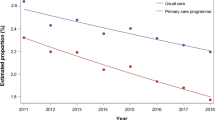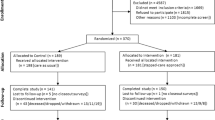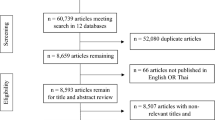Abstract
The American College of Cardiology Acute Myocardial Infarction Guidelines Applied in Practice program in Michigan, USA, was an initiative designed to improve the quality of cardiovascular care by bringing the American College of Cardiology/American Heart Association practice guidelines to the point of care. The program consisted of three different projects, involving a total of 33 hospitals. The program was implemented in five phases—planning, tool implementation, monitoring of tool use, remeasurement and reporting of results—by use of a collaborative model, which included a series of learning sessions for staff members that focused on the five phases. The goal was to identify the highest care priorities for patients with acute coronary syndromes and to incorporate these into the care itself. This aim was achieved with a standardized set of clinical-care tools, such as admission orders and discharge contracts; the use of such tools is associated with improvement in adherence to guidelines. Strategies were, however, tailored to each hospital by local teams. Performance was assessed by the use of tracking tools, which facilitate rapid improvement by enabling key performance indicators founded on the guidelines to be monitored. Using qualitative surveys of the project leaders, we identified an optimum timeline and correlations between hospital-specific attributes and greater or lesser success in achieving positive change. In this review, we describe our experience and identify the most useful strategies for future implementation of such a project.
Key Points
-
The American College of Cardiology/American Heart Association guidelines are founded on the results of randomized trials that prove certain therapies will reduce morbidity and mortality in patients with myocardial infarction
-
When standardized tools are used by the care providers, the probability that the guidelines will be applied consistently is increased
-
When the standardized tools from the GAP AMI tool kit are used, the frequency of use of guideline-recommended therapy is significantly raised
-
When standardized tools from the GAP AMI tool kit are used, in-hospital mortality and mortality at 30 days and 1 year after discharge fall significantly
This is a preview of subscription content, access via your institution
Access options
Subscribe to this journal
Receive 12 print issues and online access
$209.00 per year
only $17.42 per issue
Buy this article
- Purchase on Springer Link
- Instant access to full article PDF
Prices may be subject to local taxes which are calculated during checkout

Similar content being viewed by others
References
Antman EM et al. (2004) ACC/AHA guidelines for the management of patients with ST-Elevation myocardial infarction: a report of the American College of Cardiology/American Heart Association Task Force on Practice Guidelines (Committee on Management of Acute Myocardial Infarction). J Am Coll Cardiol 44: 671–719
Cabana MD et al. (1999) Why don't physicians follow clinical practice guidelines? A framework for improvement. JAMA 282: 1458–1465
Ellerbeck EF et al. (1995) Quality of care for Medicare patients with acute myocardial infarction: a four-state pilot study from the Cooperative Cardiovascular Project. JAMA 273: 1509–1514
McLaughlin TJ et al. (1996) Adherence to national guidelines for drug treatment of suspected acute myocardial infarction. Arch Intern Med 156: 799–805
Alexander KP et al. (2005) Evolution in cardiovascular care for elderly patients with non-ST-segment elevation acute coronary syndromes: results from the CRUSADE National Quality Improvement Initiative. J Am Coll Cardiol 46: 1479–1487
Blomkalns AL et al. (2005) Gender disparities in the diagnosis and treatment of non-ST-segment elevation acute coronary syndromes: large-scale observations from the CRUSADE (Can Rapid Risk Stratification of Unstable Angina Patients Suppress Adverse Outcomes With Early Implementation of the American College of Cardiology/American Heart Association Guidelines) National Quality Improvement Initiative. J Am Coll Cardiol 45: 832–837
Jencks SF et al. (2000) Quality of medical care delivered to Medicare beneficiaries: a profile at state and national levels. JAMA 284: 1670–1676
Jenks SF et al. (2003) Change in the Quality of Care Delivered to Medicare Beneficiaries, 1998–1999 to 2000–2001. JAMA 289: 305–312
Eagle KA et al. (2002) Taking the national guidelines for care of acute myocardial infarction to the bedside: developing the Guidelines Applied in Practice (GAP) Initiative in southeast Michigan. Jt Comm J Qual Improv 28: 5–19
Mehta RH et al. (2002) Improving quality of care for acute myocardial infarction: the Guidelines Applied in Practice (GAP) Initiative. JAMA 287: 1269–1276
Mehta RH et al. (2004) Enhancing quality of care for acute myocardial infarction:sShifting the focus of improvement from key indicators to process of care and tool use. The American College of Cardiology Acute Myocardial Infarction Guidelines Applied in Practice Project in Michigan: Flint and Saginaw Expansion. J Am Coll Cardiol 43: 2166–2173
Montoye CK et al. (2003) A rapid-cycle collaborative model to promote guidelines for acute myocardial infarction. Jt Comm J Qual Saf 29: 468–478
Fraser SW (2002) Accelerating the Spread of Good Practice: A Workbook for Health Care. Chichester: Kingsham Press Ltd
American College of Cardiology (online 13 December 2004) AMI GAP Project in Michigan Tool Kit [http://www.acc.org/gap/mi/ami_downloadA.htm] (accessed 2 November 2005)
Rogers EM (1965) Diffusion of Innovations. New York: Free Press
Eagle KA et al. (2003) Closing the gap between science and practice: the need for professional leadership. Health Aff (Millwood) 22: 196–201
Eagle KA et al. (2003) The American College of Cardiology Acute Myocardial Infarction Guidelines Applied in Practice Projects to improve the quality of AMI care in Michigan: Lessons learned from 3 projects in 33 hospitals. Presented at American College of Cardiology Scientific Sessions: 2003 March 30—April 22; Chicago, USA.
Eagle KA et al. (2005) Guideline-based standardized care is associated with substantially lower mortality in Medicare patients with acute myocardial infarction: the American College of Cardiology's Guidelines Applied in Practice (GAP) Projects in Michigan. J Am Coll Cardiol 46: 1242–1248
Jeffe DB et al. (2003) Using focus groups to understand physicians' and nurses' perspectives on error reporting in hospitals. Jt Comm J Qual Saf 30: 471–479
Author information
Authors and Affiliations
Corresponding author
Ethics declarations
Competing interests
The authors declare no competing financial interests.
Rights and permissions
About this article
Cite this article
Eagle, K., Koelling, T. & Montoye, C. Primer: implementation of guideline-based programs for coronary care. Nat Rev Cardiol 3, 163–171 (2006). https://doi.org/10.1038/ncpcardio0499
Received:
Accepted:
Issue Date:
DOI: https://doi.org/10.1038/ncpcardio0499
This article is cited by
-
Global availability of cardiac rehabilitation
Nature Reviews Cardiology (2014)
-
Prospective Assessment of Inpatient Gastrointestinal Consultation Requests in an Academic Teaching Hospital
American Journal of Gastroenterology (2010)



